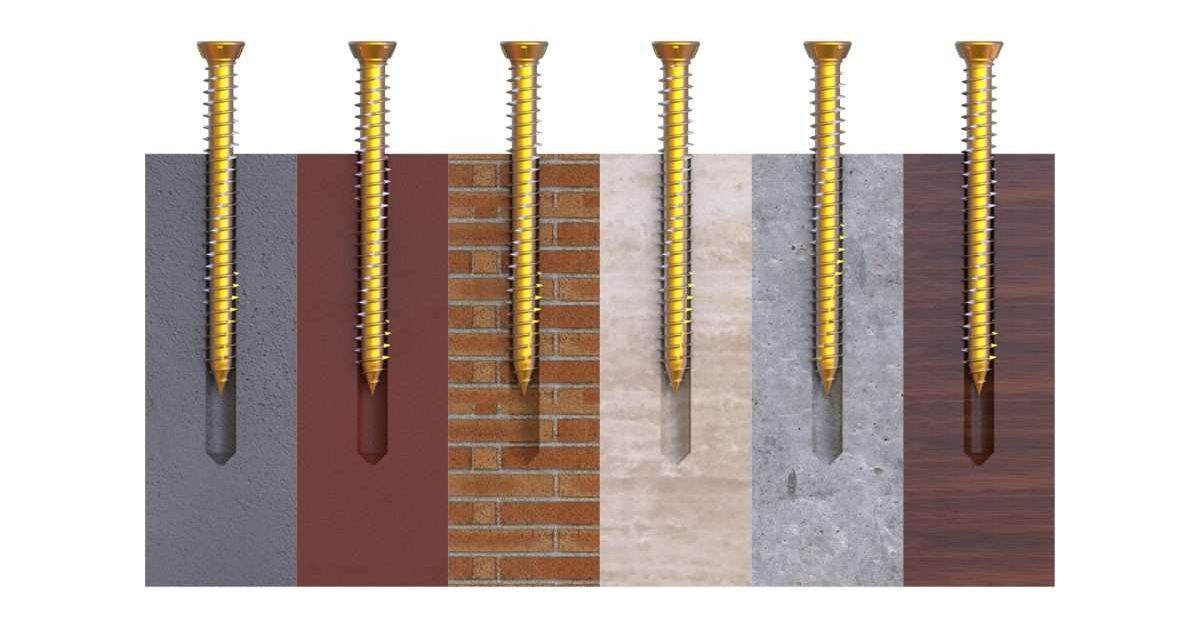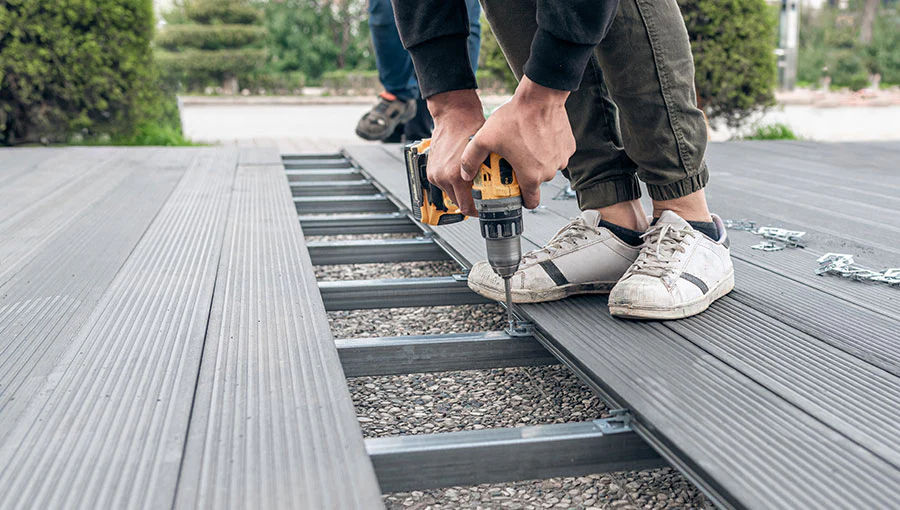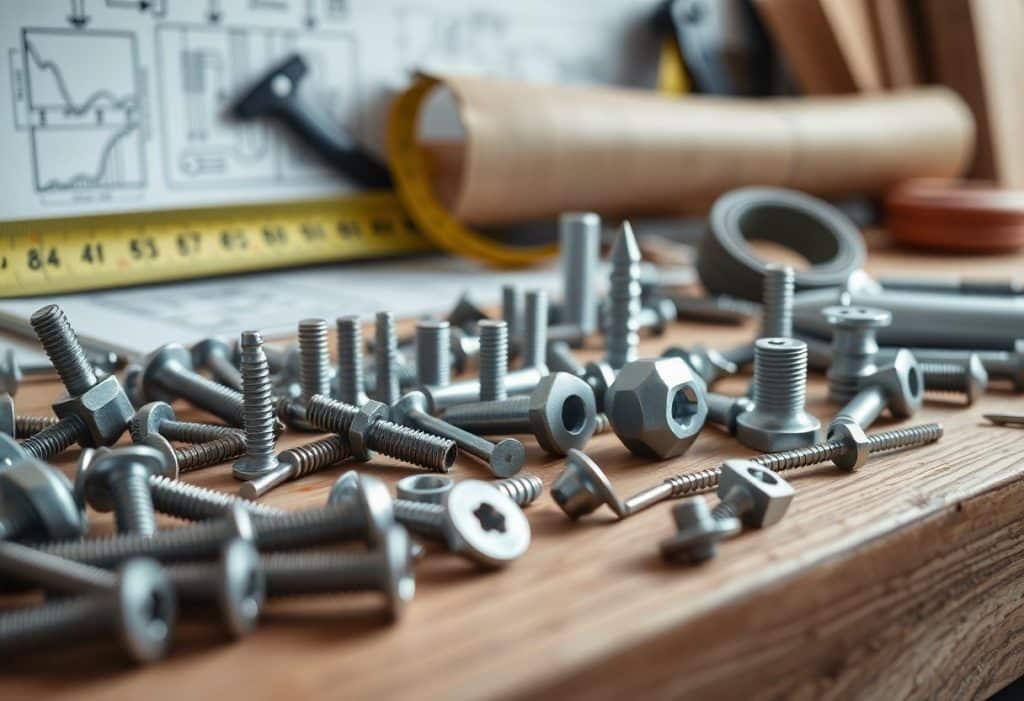In the world of construction and DIY projects, the choice of fasteners can make or break the success and durability of your work. Among the myriads of options available, concrete screws and traditional fasteners often stand out. But which one is the better choice? In this comprehensive guide, we’ll dive deep into the world of fasteners, comparing concrete screws and traditional fasteners to determine which comes out on top.
Concrete screws, also known as masonry screws, are specifically designed for securing materials to concrete, brick, and other masonry surfaces. They are made from hardened steel and have a unique thread design that allows them to cut into the concrete as they are driven in.

Traditional Fasteners
Traditional fasteners include nails, bolts, and other screws designed for use in wood, metal, and drywall. These fasteners come in various shapes, sizes, and materials, each suited to different applications and load requirements.
Applications and Use Cases of Concrete Screws
Concrete screws are ideal for applications where a strong, reliable hold is required in masonry materials. Common use cases include:
– Mounting electrical boxes and fixtures to concrete walls
– Securing framing to concrete floors
– Installing shelving and brackets on brick walls
– Anchoring outdoor structures like fences and decks to concrete footings
Traditional Fasteners
Traditional fasteners are versatile and can be used in a wide range of applications, including:
– Building wooden structures like decks and fences
– Attaching drywall to wooden or metal studs
– Securing metal brackets and joist hangers
– General carpentry and woodworking projects
Installation Process of Concrete Screws
Installing concrete screws requires a few specialized tools and steps:
1. Drilling a Pilot Hole: Use a hammer drill with a masonry bit to drill a pilot hole into the concrete. The hole should be slightly smaller in diameter than the screw.
2. Inserting the Screw: Insert the screw into the pilot hole and use an impact driver or drill with a screwdriver bit to drive the screw into the concrete.
Traditional Fasteners
The installation process for traditional fasteners varies depending on the type:
– Nails: Driven into the material using a hammer or nail gun.
– Wood Screws: Require a pilot hole in hardwoods; driven directly into softwoods.
– Bolts: Typically require a pre-drilled hole and are secured with a nut and washer.
Holding Power and Durability of Concrete Screws
Concrete screws offer exceptional holding power in masonry materials. Their unique thread design ensures a tight grip, making them highly resistant to pull-out and shear forces. They are also corrosion-resistant, which enhances their durability in outdoor and high-moisture environments.
Traditional Fasteners
The holding power and durability of traditional fasteners depend on the material and application:
– Nails: Provide moderate holding power but can loosen over time, especially with wood movement.
– Wood Screws: Offer good holding power and durability, especially when used in conjunction with pilot holes.
– Bolts: Provide the highest holding power and durability, making them ideal for heavy-duty applications.
Cost and Availability of Concrete Screws
Concrete screws are generally more expensive than traditional fasteners due to their specialized design and materials. However, their superior performance in masonry applications often justifies the higher cost. They are readily available at most hardware stores and online retailers.
Traditional Fasteners
Traditional fasteners are widely available and come in a range of prices. Nails and wood screws are typically less expensive than concrete screws, while bolts can vary in cost depending on size and material.
Pros and Cons Of Concrete Screws
Pros:
– Excellent holding power in masonry materials
– Corrosion-resistant for outdoor use
– Easy to install with the right tools
Cons:
– Higher cost compared to traditional fasteners
– Requires specialized tools (hammer drill, masonry bit)
Traditional Fasteners
Pros:
– Versatile and suitable for a wide range of applications
– Generally lower cost
– Readily available in various sizes and materials
Cons:
– May not provide sufficient holding power in masonry materials
– Nails can loosen over time
Case Studies and Real-World Examples
To illustrate the effectiveness of concrete screws vs. traditional fasteners, let’s look at a few real-world examples:
Case Study 1: Securing Framing to Concrete Floors
A contractor used concrete screws to secure wooden framing to a concrete floor in a basement renovation. The screws provided a strong, stable connection, ensuring the walls remained plumb and secure over time. In contrast, using traditional nails or wood screws would not have provided the necessary holding power in the concrete.
Case Study 2: Installing Outdoor Shelving on a Brick Wall
A homeowner used concrete screws to install heavy-duty shelving on an exterior brick wall. The screws’ corrosion-resistant coating ensured they would withstand the elements, while their superior holding power kept the shelves securely in place. Traditional fasteners like nails or wood screws would not have been suitable for this application.
Case Study 3: Building a Wooden Deck
A DIY enthusiast used traditional wood screws and bolts to build a wooden deck. The wood screws provided reliable holding power for the deck boards, while the bolts secured the joists and beams. Concrete screws were not necessary for this project, as the deck was built entirely with wood.
Expert Tips for Choosing the Right Fastener
1. Assess the Material: Determine the primary material you’ll be working with (concrete, wood, metal) and choose a fastener designed for that material.
2. Consider the Load: Evaluate the load requirements of your project. For heavy-duty applications, bolts or concrete screws may be necessary, while lighter tasks can be handled with nails or wood screws.
3. Use the Right Tools: Ensure you have the appropriate tools for the fasteners you’re using. For concrete screws, a hammer drill and masonry bit are essential, while traditional fasteners may require a range of tools from hammers to drills and wrenches.
4. Follow Manufacturer Guidelines: Always follow the manufacturer’s recommendations for installation, including pilot hole size and screw length. This ensures optimal performance and safety.
5. Test Before Committing: When in doubt, test a small section of your project with the chosen fastener to ensure it provides the desired holding power and stability.
Conclusion: Which Wins?
Ultimately, the choice between concrete screws and traditional fasteners depends on the specific requirements of your project. Concrete screws are the clear winner for masonry applications, offering superior holding power and durability. However, traditional fasteners remain versatile and cost-effective for a wide range of tasks, particularly in wood and metal.
By understanding the strengths and limitations of each fastener type, you can make an informed decision that ensures the success and longevity of your construction or DIY project. Whether you’re securing framing to a concrete floor, building a wooden deck, or installing shelving on a brick wall, choosing the right fastener is key to achieving professional results.



